Introduction
Released in 1988 by Namco, Splatterhouse is a groundbreaking arcade game that combined gruesome visuals, horror themes, and side-scrolling action into an unforgettable experience. Developed by Shigeru Yokoyama, the game invites players into a blood-soaked journey through a haunted mansion as they battle horrifying monsters to rescue Jennifer, the protagonist’s kidnapped girlfriend. Known for its controversial content and unique gameplay, Splatterhouse became a cult classic that pushed the boundaries of what arcade games could achieve.
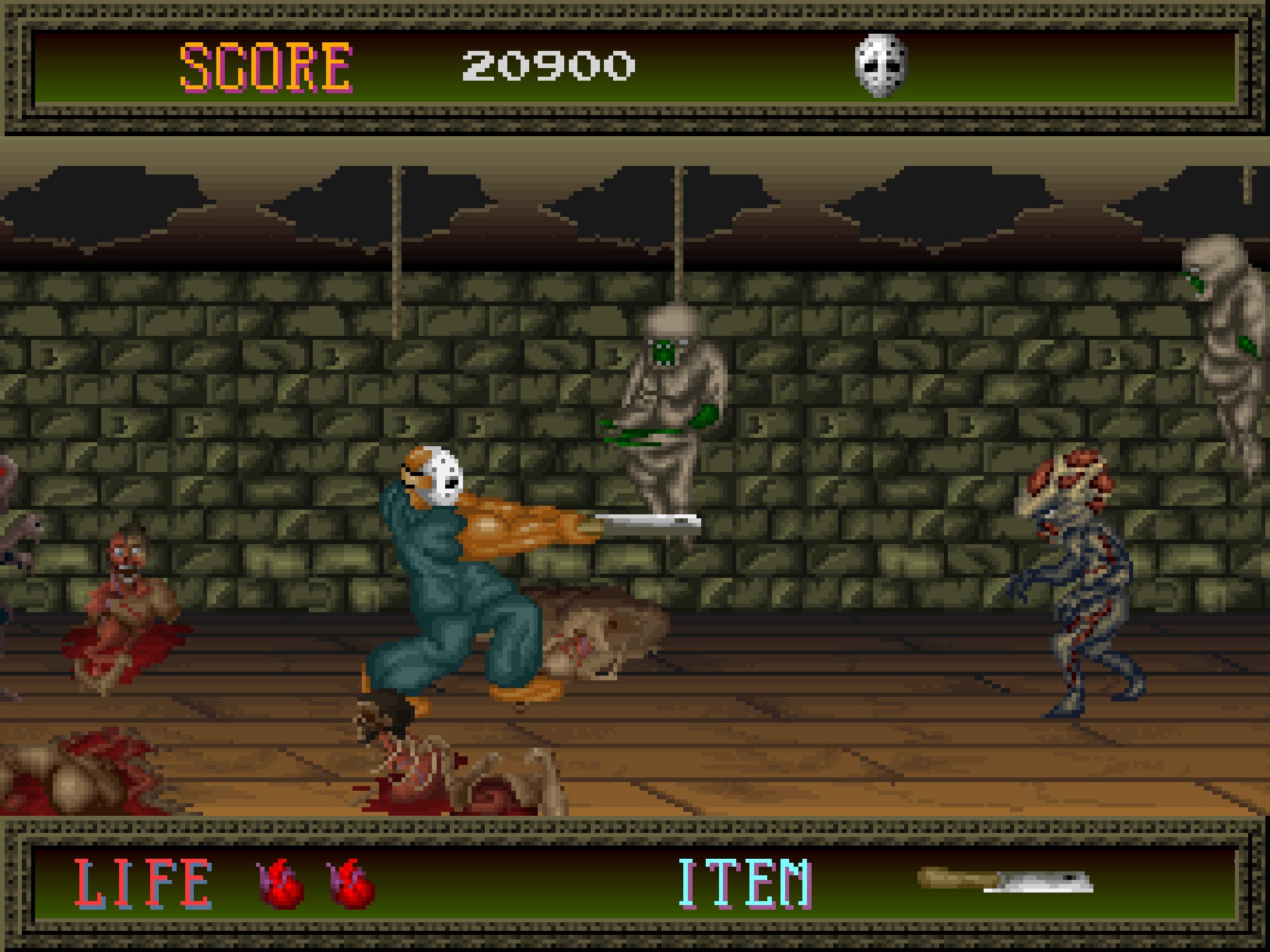
Gameplay and Mechanics
Splatterhouse delivers fast-paced, side-scrolling action that challenges players with brutal enemies and creative combat mechanics. The game’s gory aesthetic and innovative gameplay set it apart from other arcade titles of the era.
Key Features
- Weapons and Combat: Players can use a variety of weapons, including cleavers, wooden planks, and shotguns, to battle grotesque enemies.
- Horror Atmosphere: The dark, eerie environments are filled with monsters inspired by classic horror films.
- Health System: Players have a limited health bar, making every encounter a tense and strategic challenge.
- Boss Fights: Each stage culminates in a battle against a horrific boss, from giant worms to floating heads.
Level Design
The game features seven levels, each with unique themes ranging from the haunted mansion’s corridors to hellish dimensions filled with grotesque imagery. The levels are linear but packed with traps, enemies, and atmospheric details.
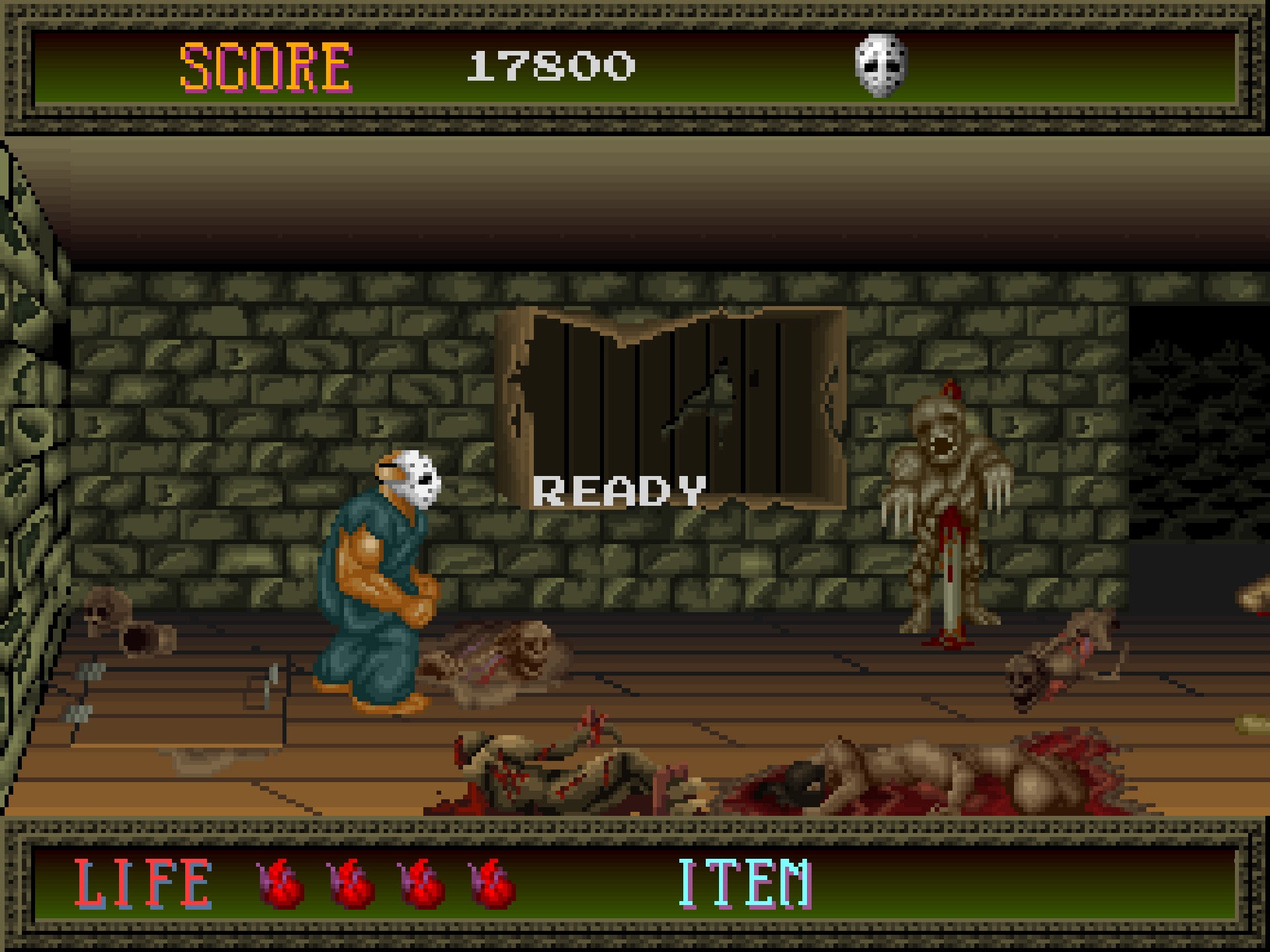
Splatterhouse Gameplay Video
Design and Development
Splatterhouse was developed by Namco’s talented team, led by Shigeru Yokoyama. Drawing inspiration from horror movies like Friday the 13th and Evil Dead, the developers aimed to create an experience that blended arcade action with cinematic horror.
Visuals and Audio
The game’s detailed sprite work and vivid animations brought its grotesque monsters to life. The soundtrack combined eerie melodies with intense action themes, enhancing the game’s horrifying atmosphere.
Cabinet Design
The arcade cabinet featured eye-catching artwork depicting Rick, the protagonist, in his iconic terror mask surrounded by monstrous creatures. Its dark design matched the tone of the game, attracting fans of horror and action alike.
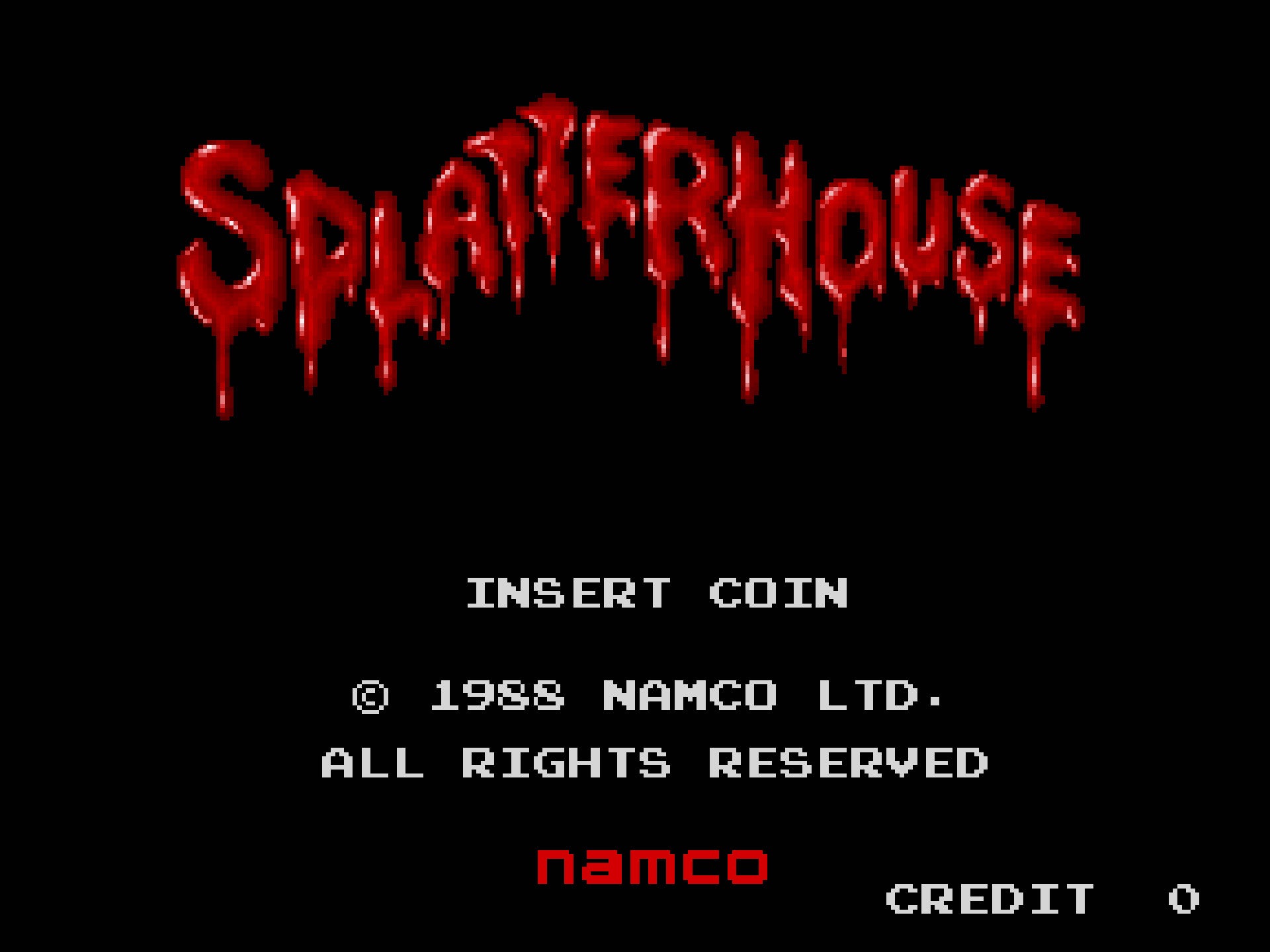
Cultural Impact and Legacy
Splatterhouse was both celebrated and criticized for its graphic violence, but its unique approach to horror gaming left an indelible mark on the industry.
Franchise Expansion
- The game spawned multiple sequels, including Splatterhouse 2 (1992) and Splatterhouse 3 (1993).
- A modern reboot was released in 2010, paying homage to the original while updating the gameplay for a new generation.
Enduring Popularity
The game’s cult following remains strong, with fans appreciating its pioneering role in merging horror with arcade action. Its influence can be seen in later horror-themed games.
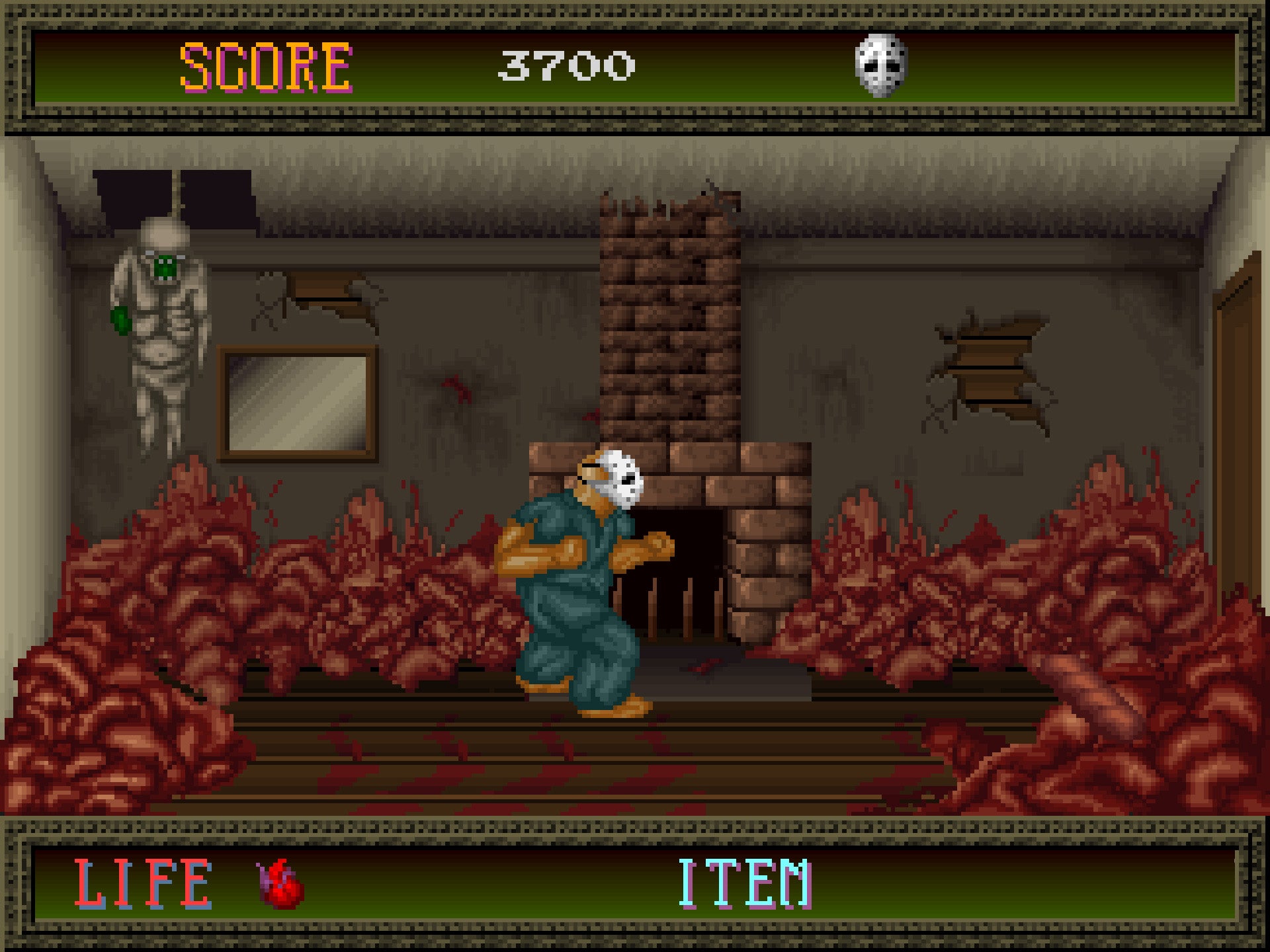
Fun Facts
- The terror mask worn by Rick was initially inspired by Jason Voorhees from Friday the 13th.
- The game’s graphic content led to censorship and altered versions for some markets.
- Splatterhouse is one of the earliest games to feature explicit gore, paving the way for the survival horror genre.
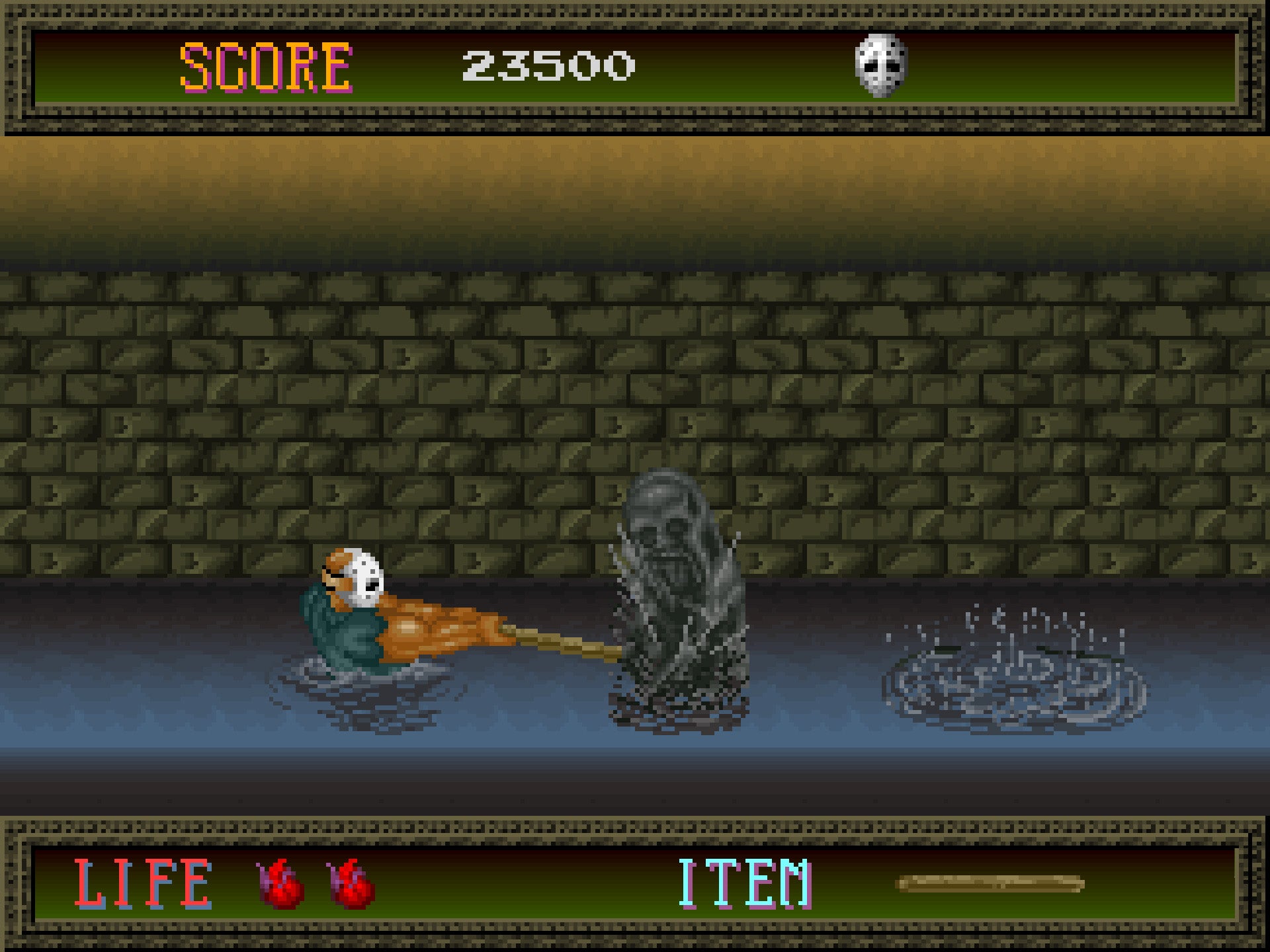
Conclusion
Splatterhouse stands as a testament to the innovation and boldness of 1980s arcade gaming. Its gruesome visuals, tense gameplay, and atmospheric design make it a must-play for fans of horror and retro games. Whether battling through hordes of monsters or facing off against terrifying bosses, Splatterhouse offers a chilling experience that still resonates today.
Want to Go Deeper Into Arcade History?
If this game left you craving more, dive into the complete stories behind some of the most iconic arcade genres and franchises. These articles explore the rise, innovation, and legacy of the games that shaped arcade culture:
- Top 25 Beat ’Em Up Arcade Games of All Time – Discover the ultimate ranking of the greatest beat ’em ups ever to hit arcades
- The History of Beat ’Em Up Arcade Games – From Double Dragon to Final Fight, here’s how brawlers ruled the late ’80s.
- Donkey Kong’s Rise to Fame: How a Desperate Bet Created a Gaming Legend – The untold story of how Nintendo turned failure into a global icon, launching Mario, Miyamoto, and a new era of arcade storytelling
- The Economics of Arcade Gaming: The Golden Age of Coin-Op – This article explores the full arc of arcade economics: the explosive rise, the industry-shaking crash, and the waves of reinvention that kept the business alive
- The Complete History of Mortal Kombat Arcade – How a gritty fighter became a pop culture phenomenon.

